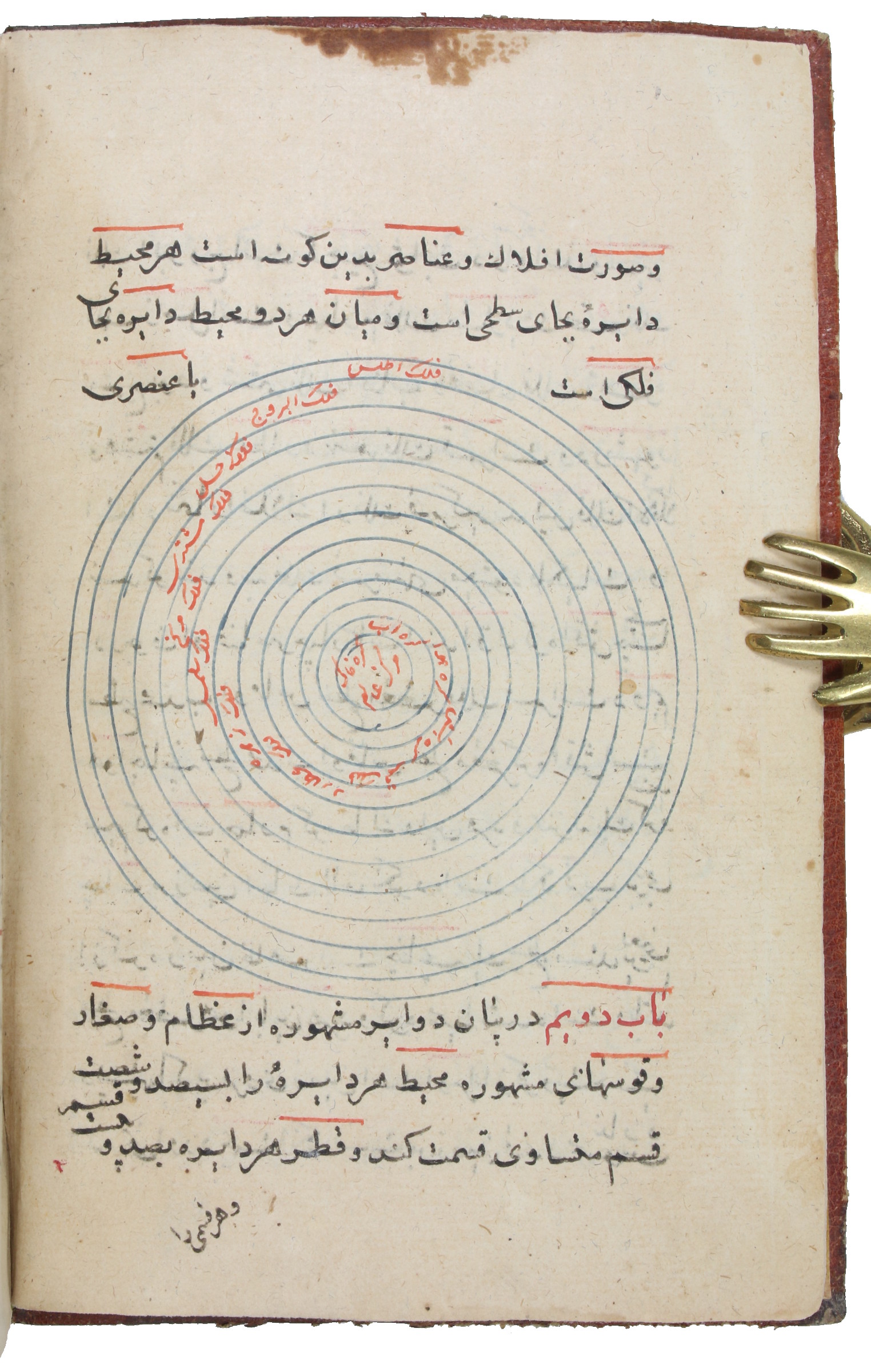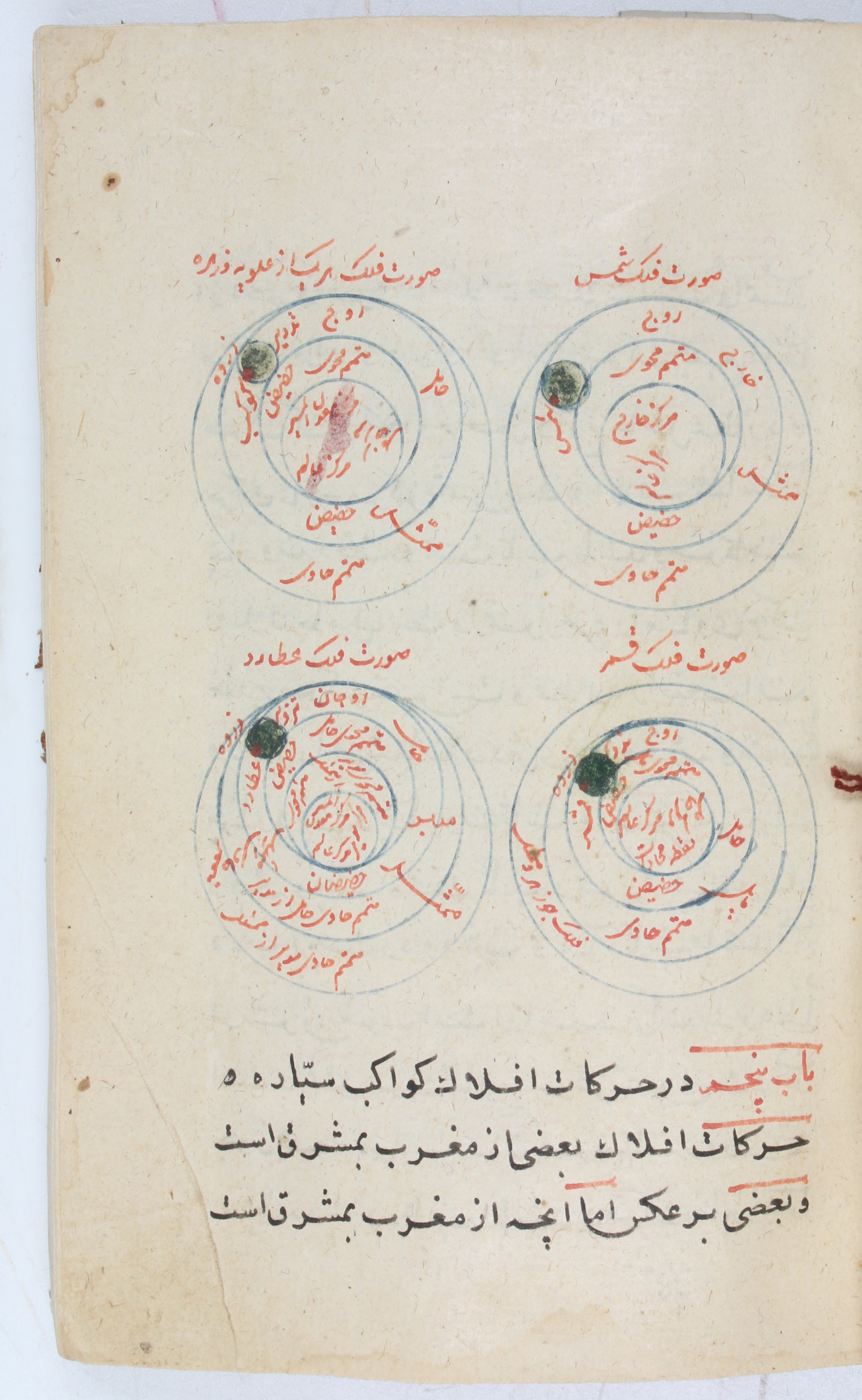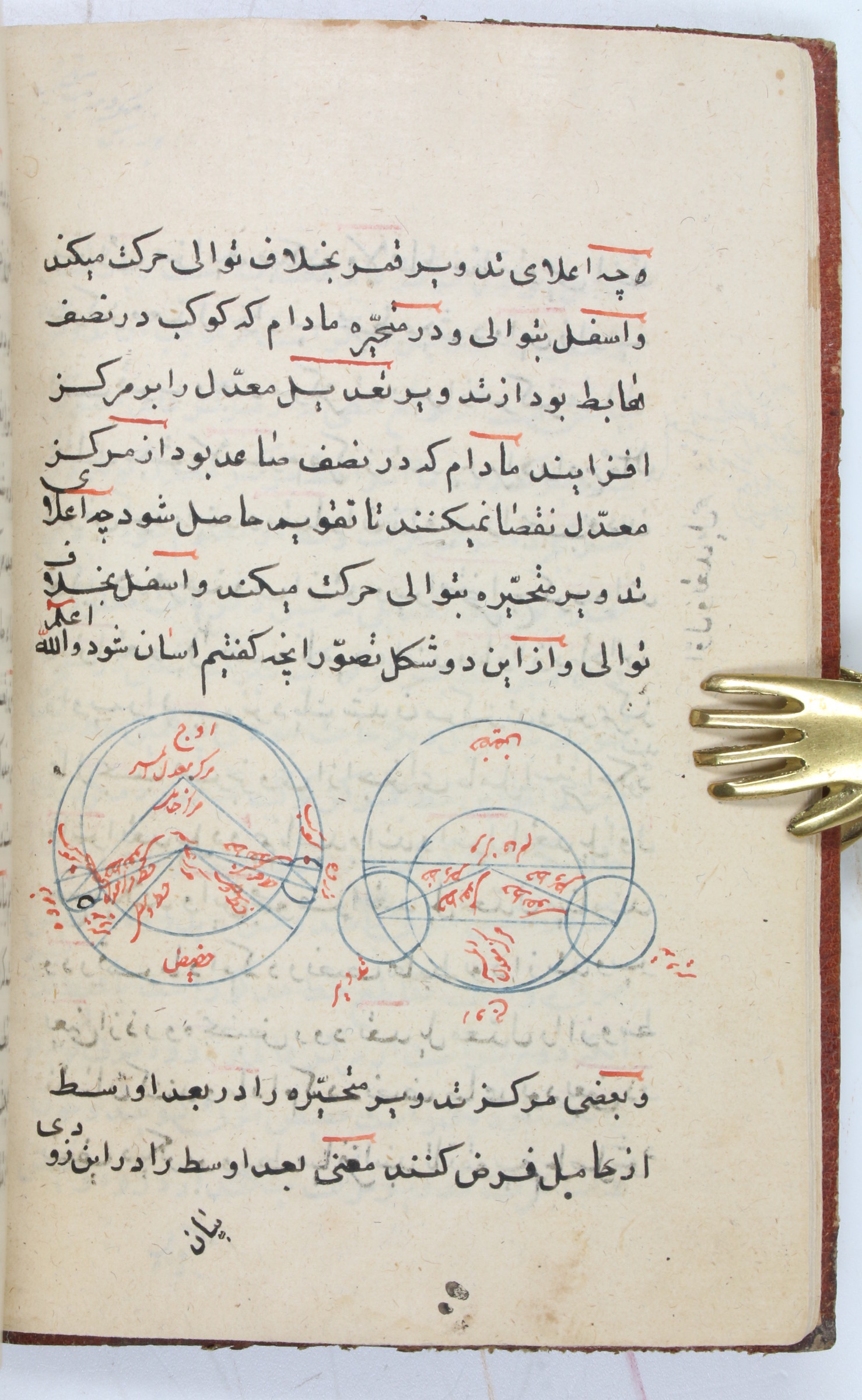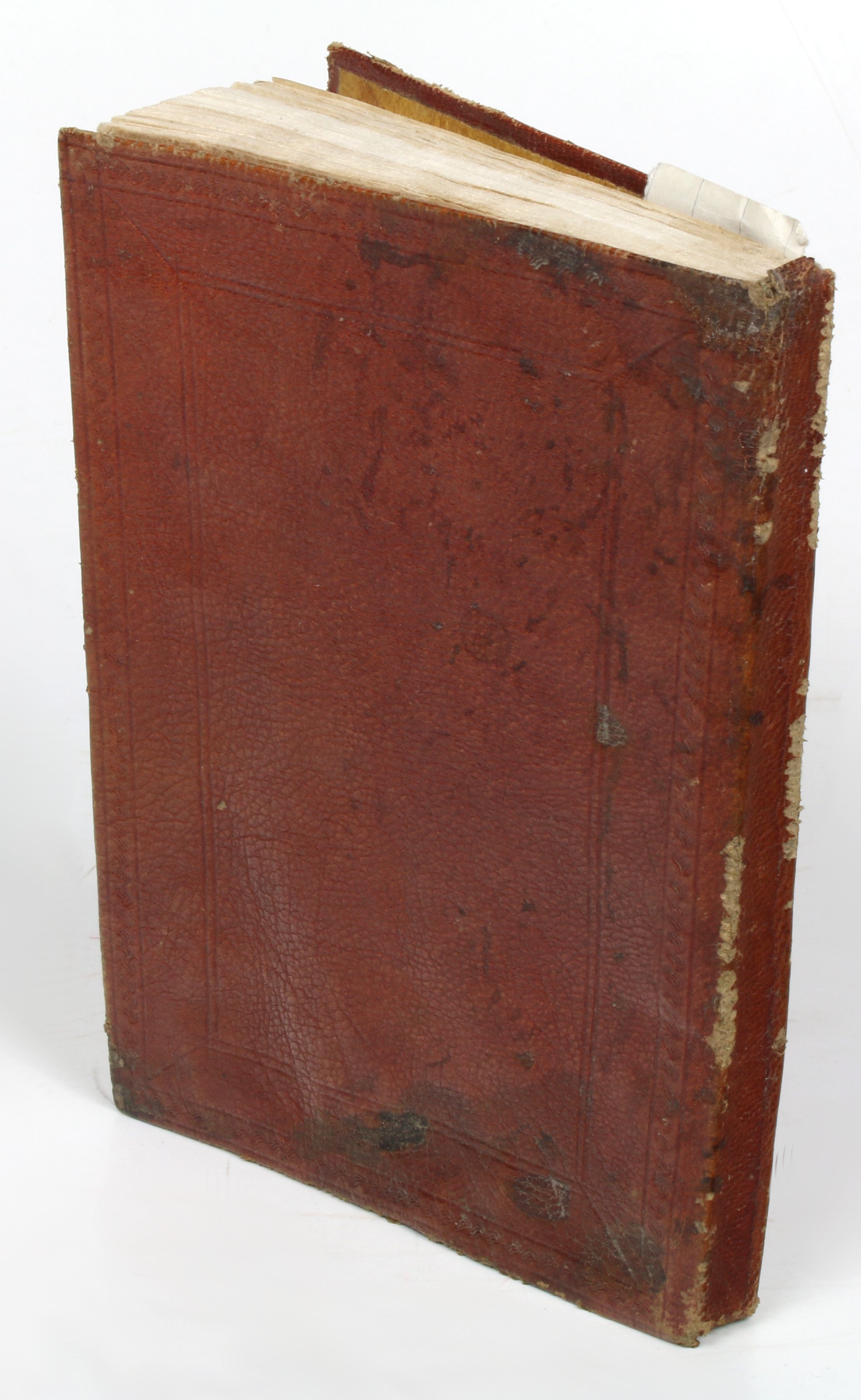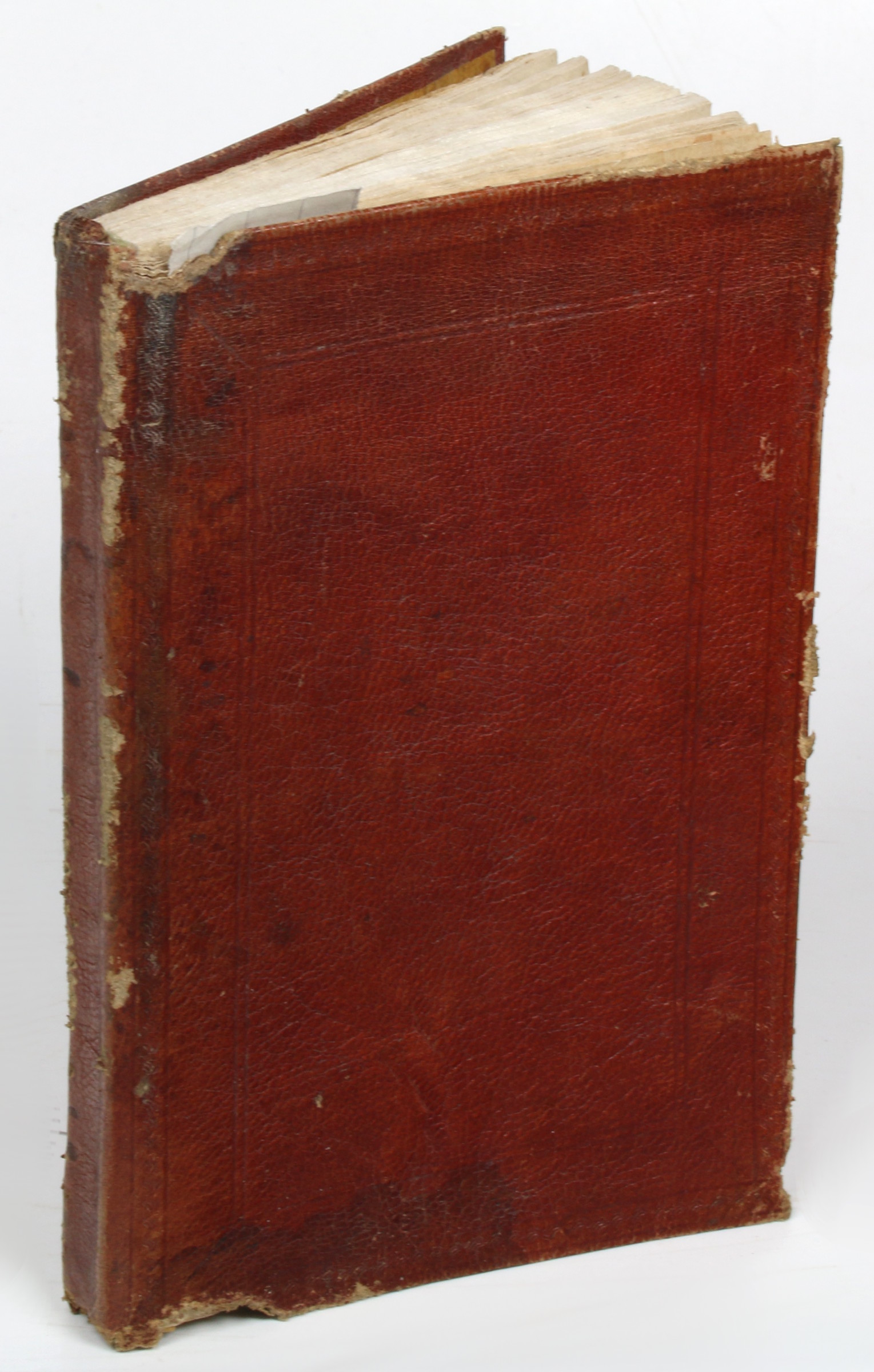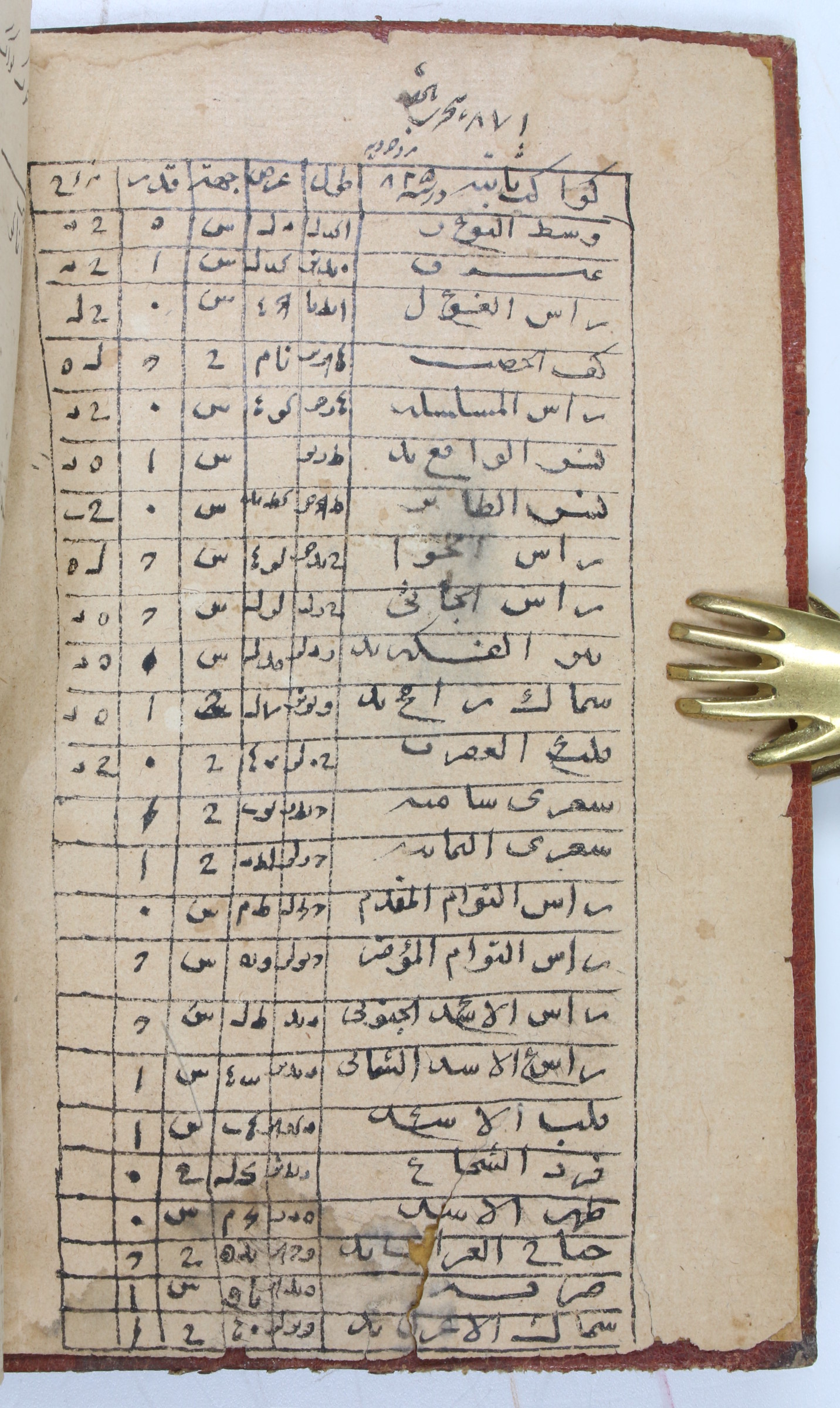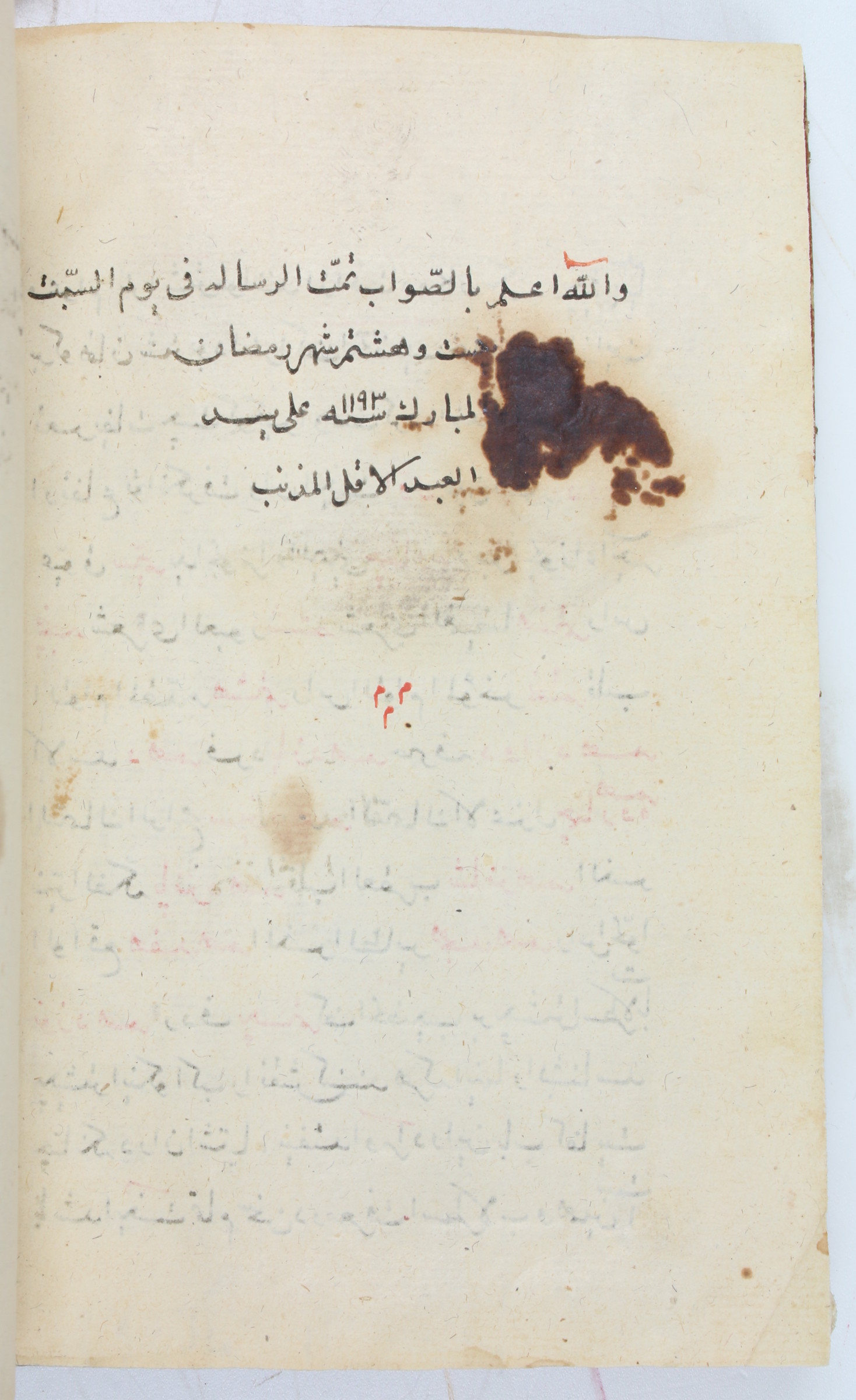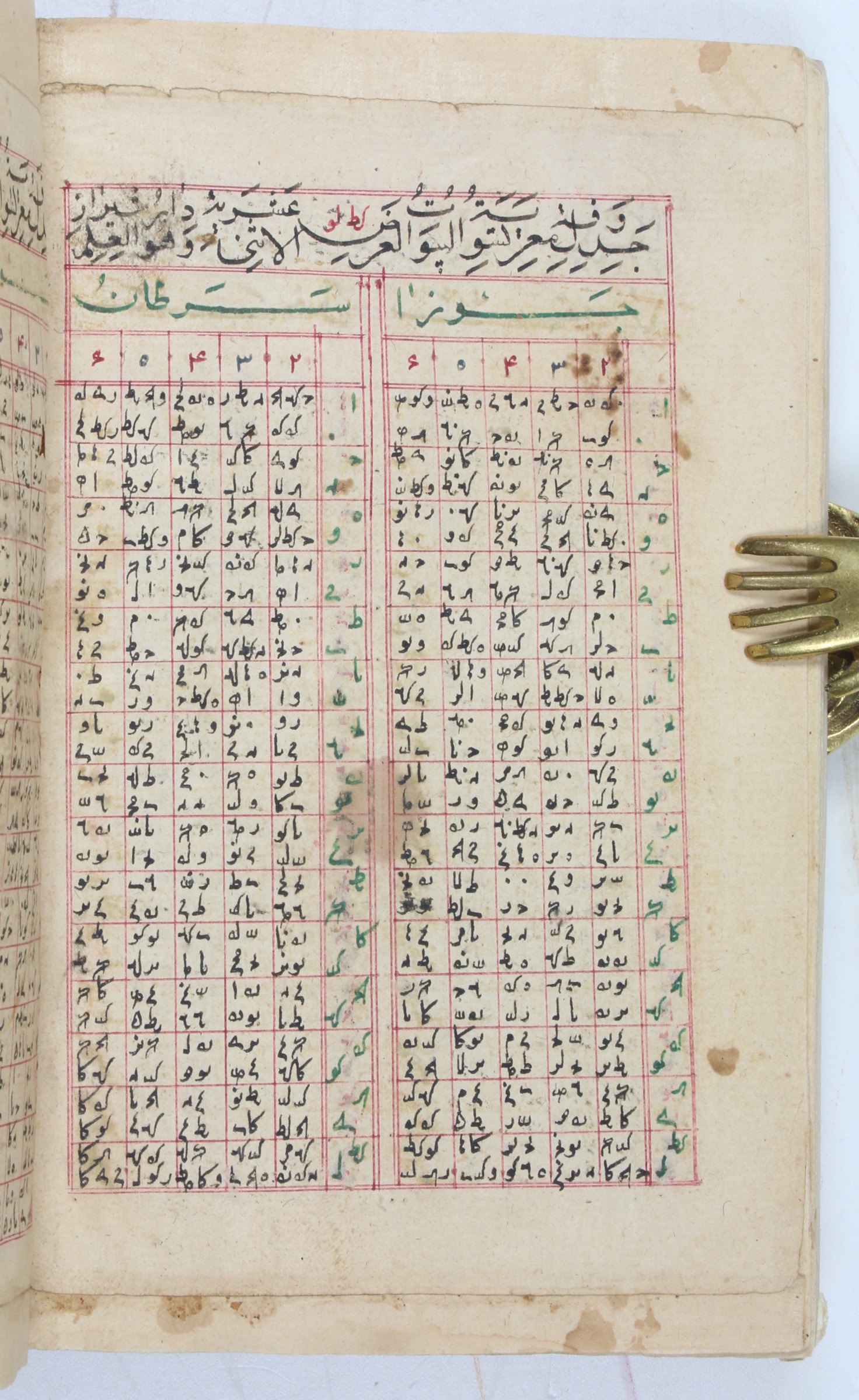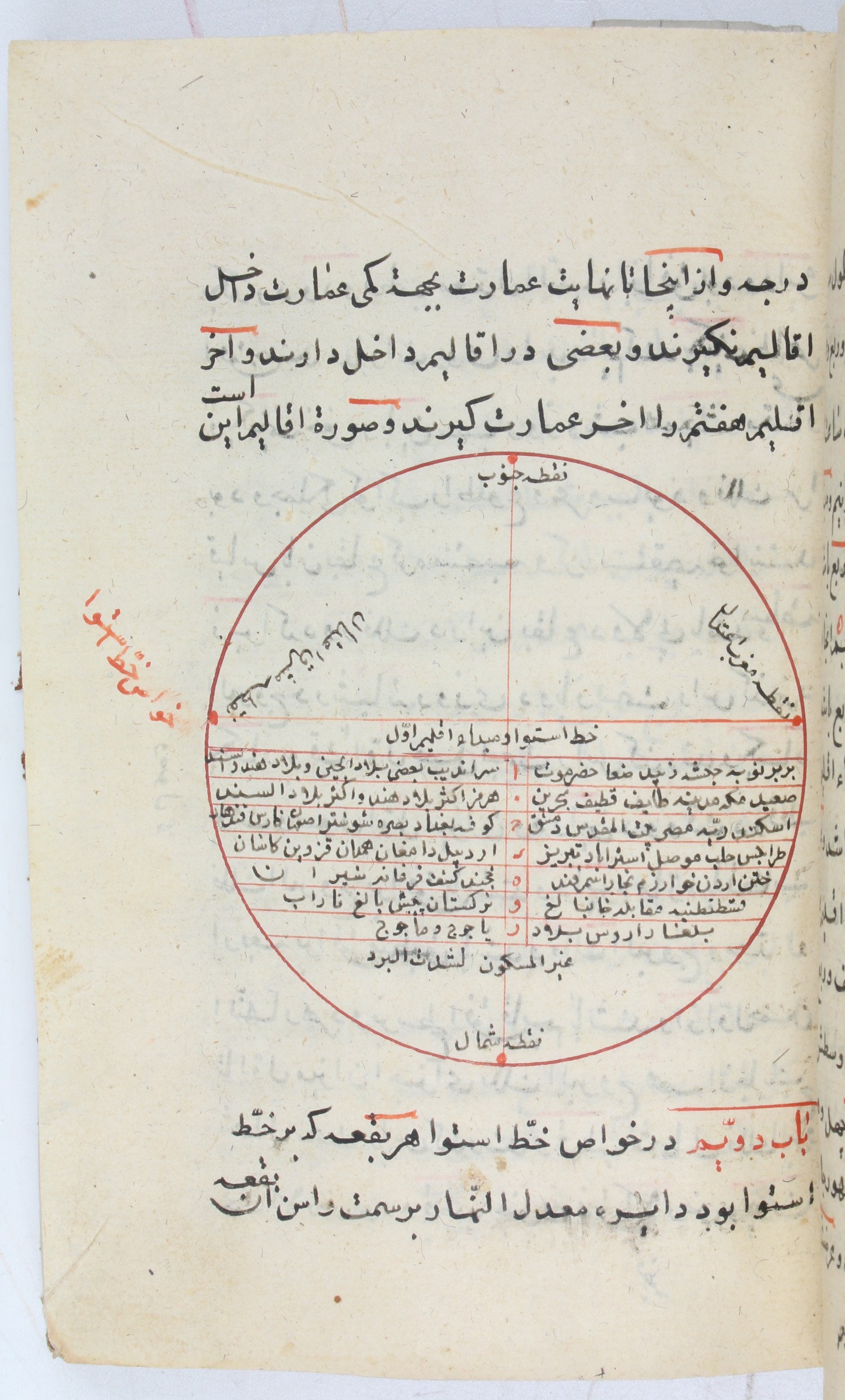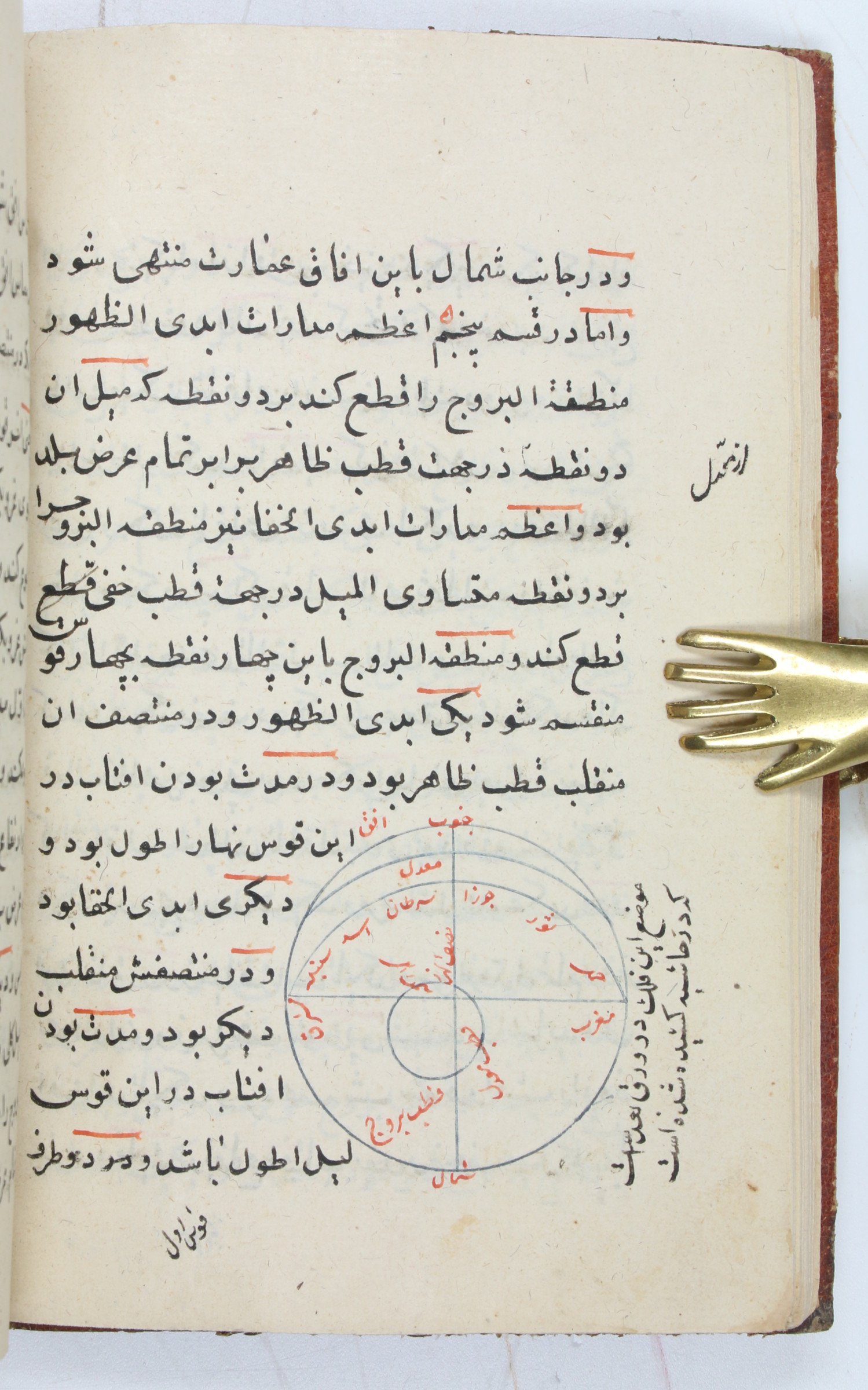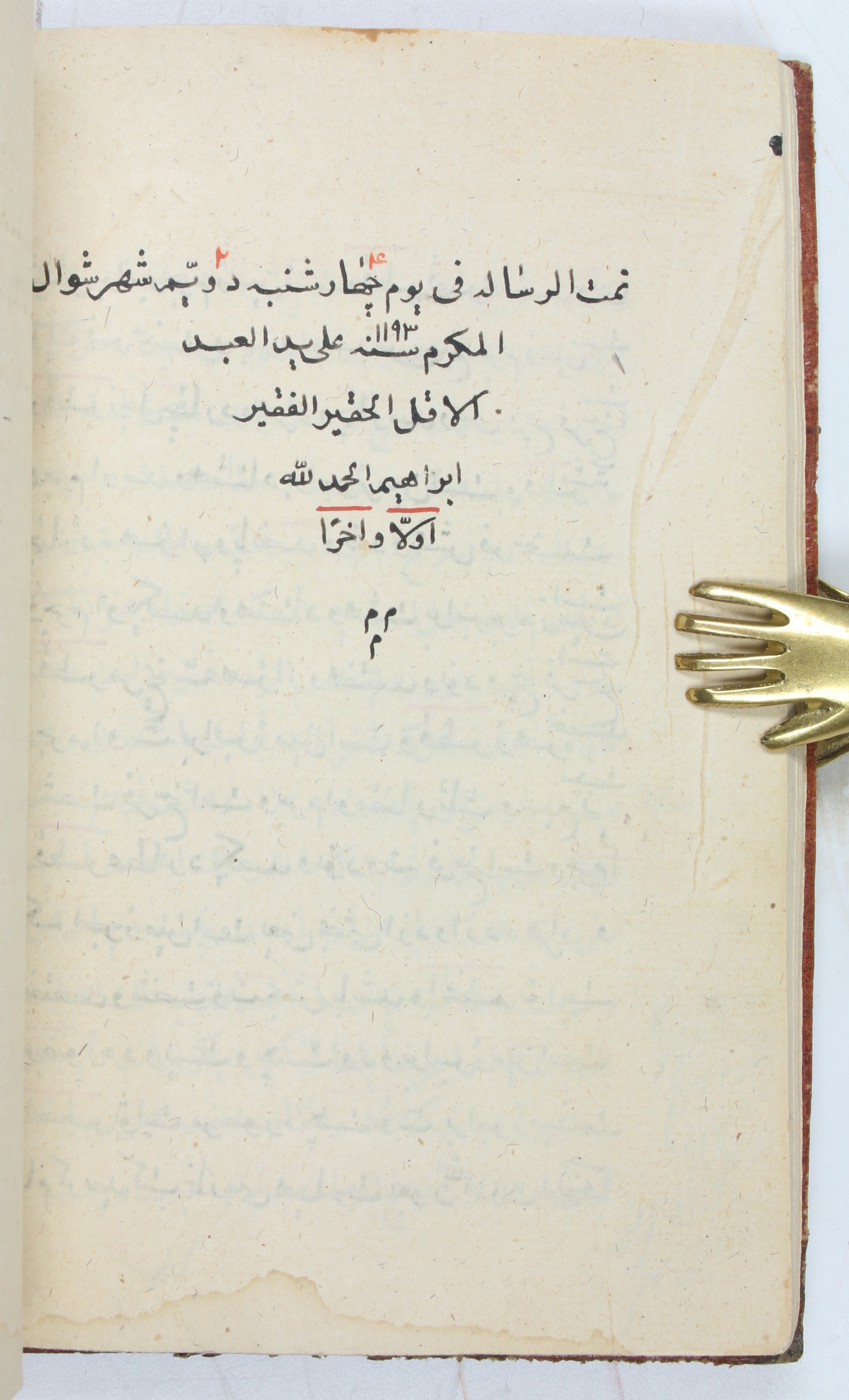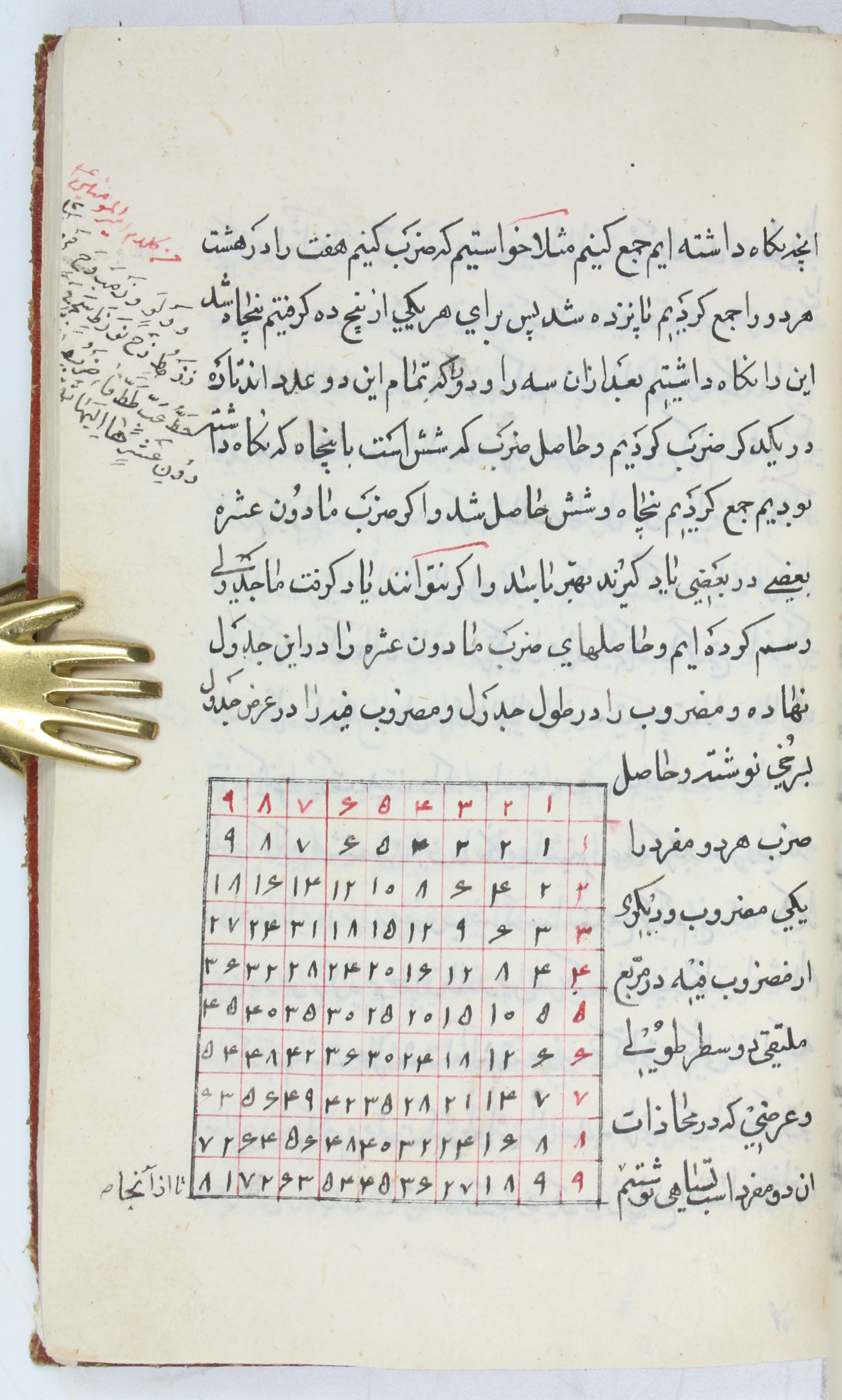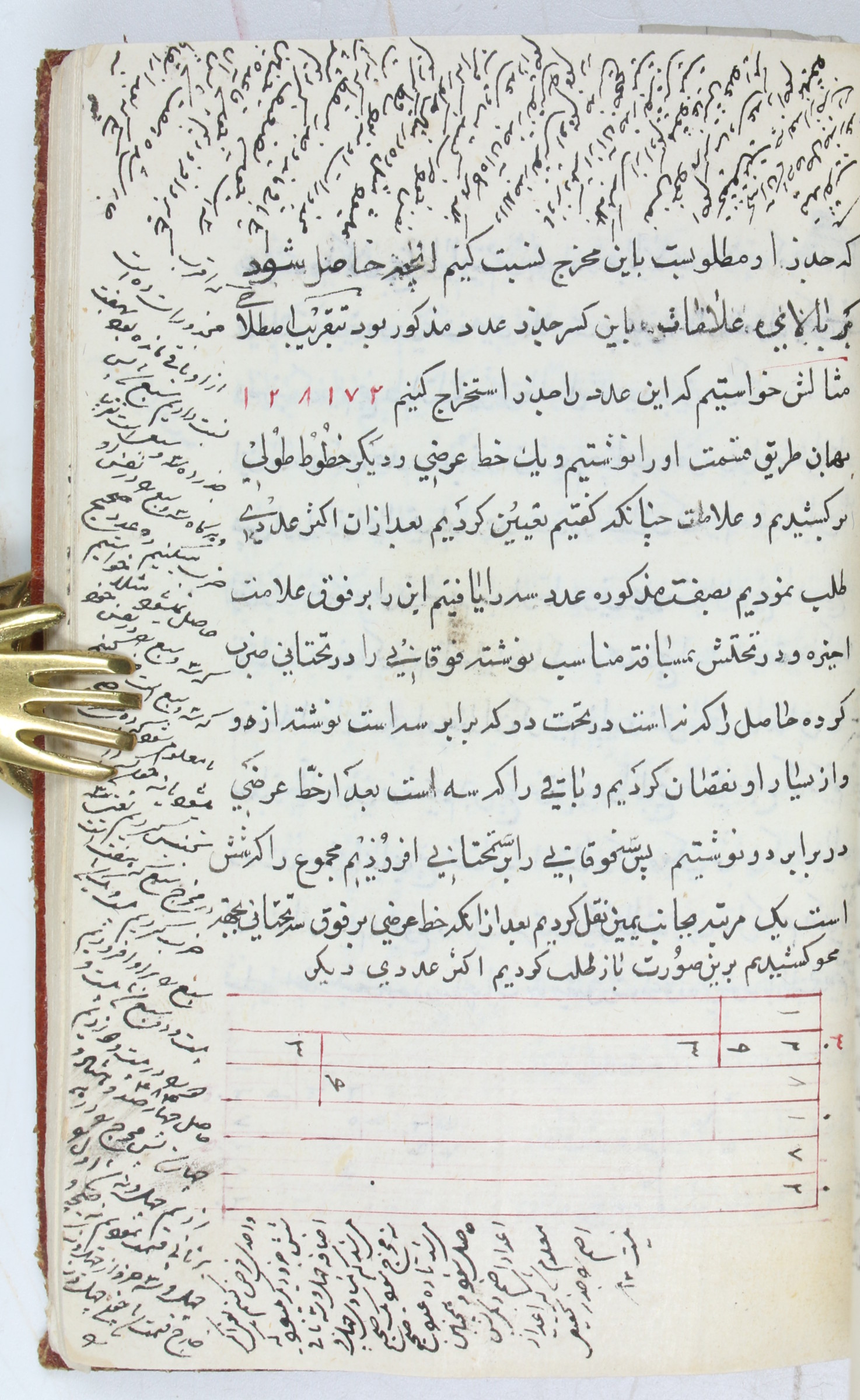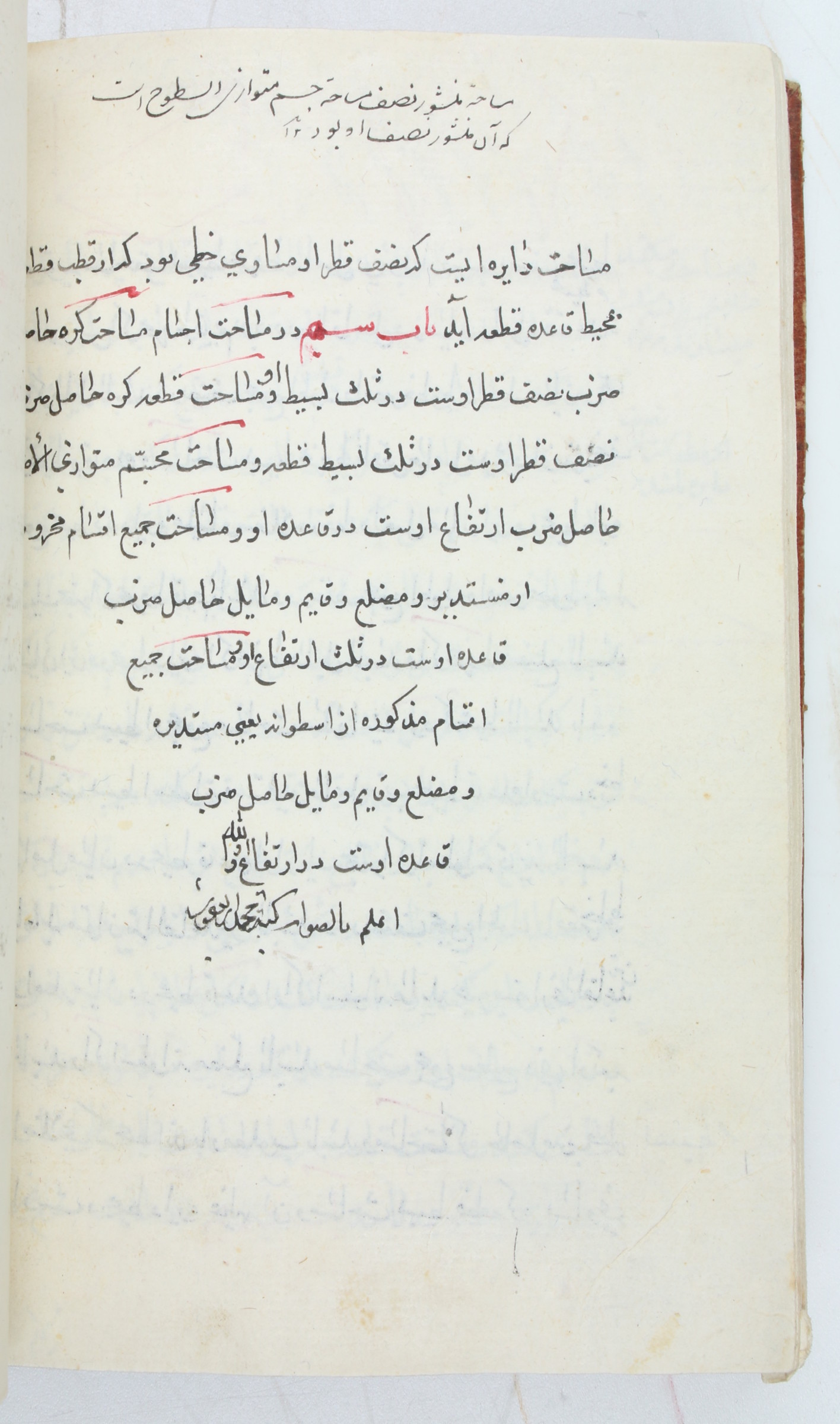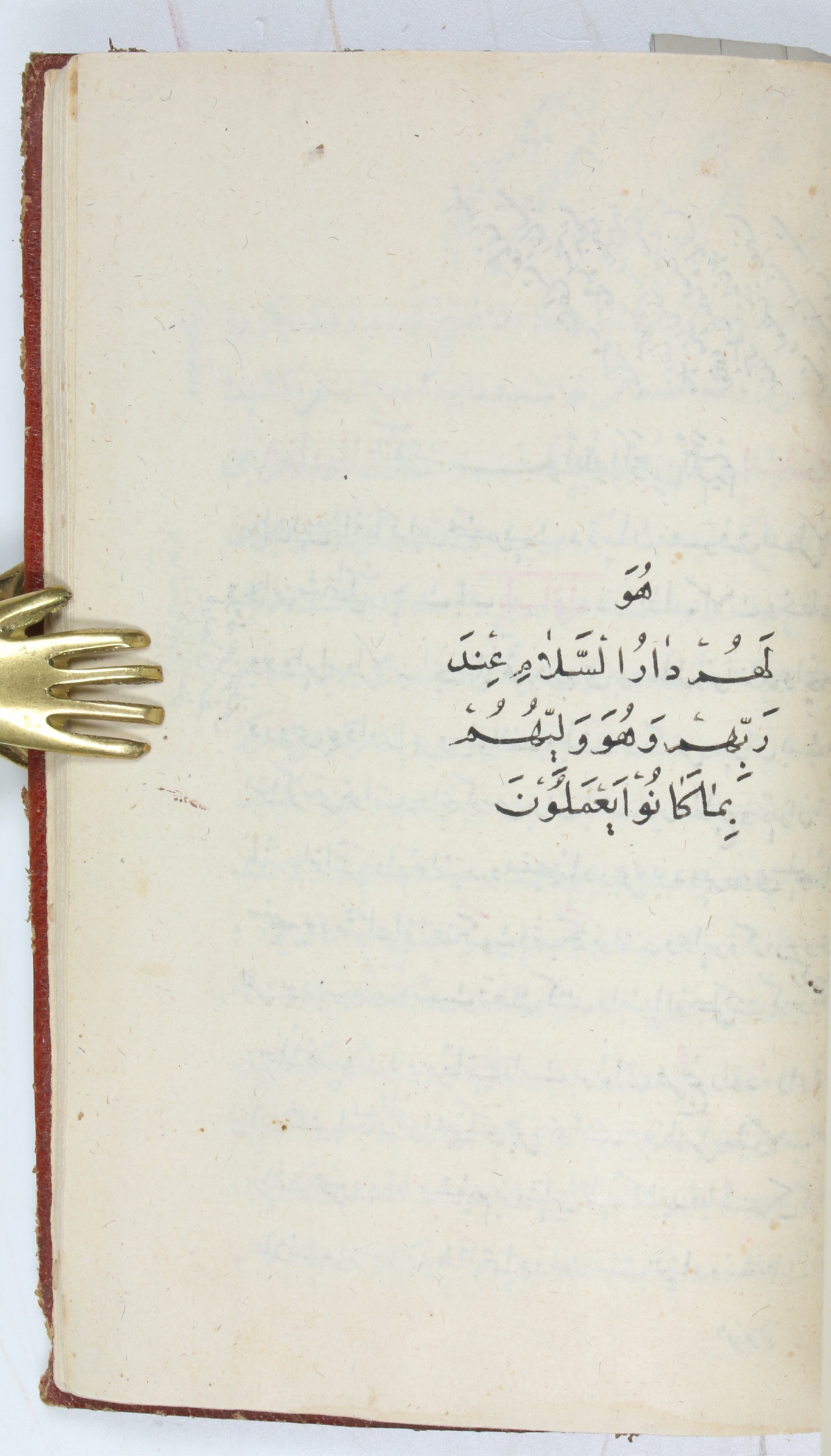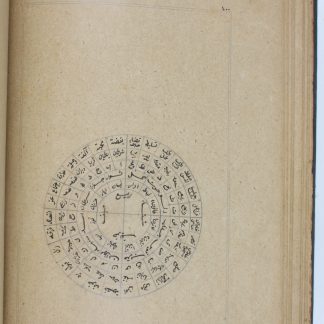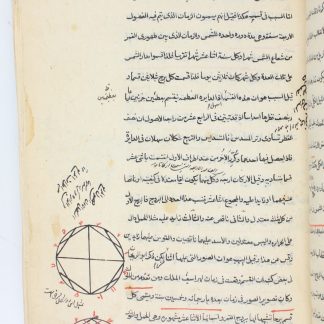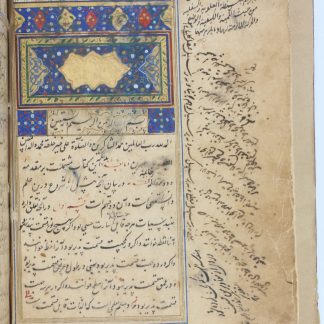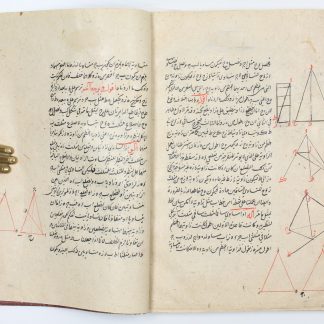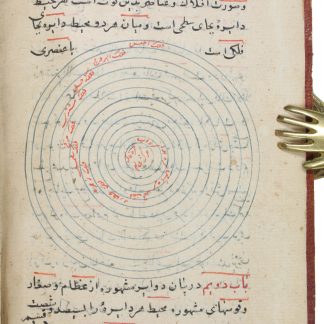The revolutionary Ali Qushji on astronomical science
Risalah dar 'Ilm-i Hay'at [A treatise on the science of astronomy].
8vo (106 x 161 mm). 132 ff. Persian manuscript on paper. Black nasta'liq script with rubrication, marginal notes; index in red, black and green ink. 19th century limp red morocco, ruled and decorated in blind.
€ 4.500,00
An astronomical work by Aladdin Ali ibn Muhammed (1403-74), also known as Ali Qushji (Ali Kushgii or Ali Kusçu), a revolutionary astronomer and mathematician of the Timurid era. Ali Qushji famously rejected astronomy's wholesale reliance on philosophy, and in doing so freed his scientific work from some particularly limiting Aristotelian philosophical concepts. Contrary to Aristotle, Ali Qushji stated that Earth need not be stationary (that is, it could rotate) and that there was no need for astronomers to follow the Aristotelian notion that the heavenly bodies necessarily moved in uniform circular motion, a precursor of the concept of elliptical orbits, like Mercury's and that of many comets. As a disciple of Ulugh Beg, Ali Qushji also contributed to the famous work Zij-i-Sultani and to the founding of Sahn-i Seman Madrasa at the Fatih Mosque in Istanbul.
The text comprises distinct sections pertaining to astronomy and arithmetic, illustrated with various diagrams, especially of the movement of heavenly bodies. This particular copy is bound alongside select chapters of a second treatise, the "Haftad bab dar Usturlab" (Seventy chapters on the rule of the astrolabe), written by Shaykh-i Baha'i in 1004 H (1596 CE).
Light wear, staining to rear leaves, otherwise bright and clean. Provenance: from the property of the botanist Dr. Eugene L. Vigil (b. 1941), of Lynden, Washington, USA.

